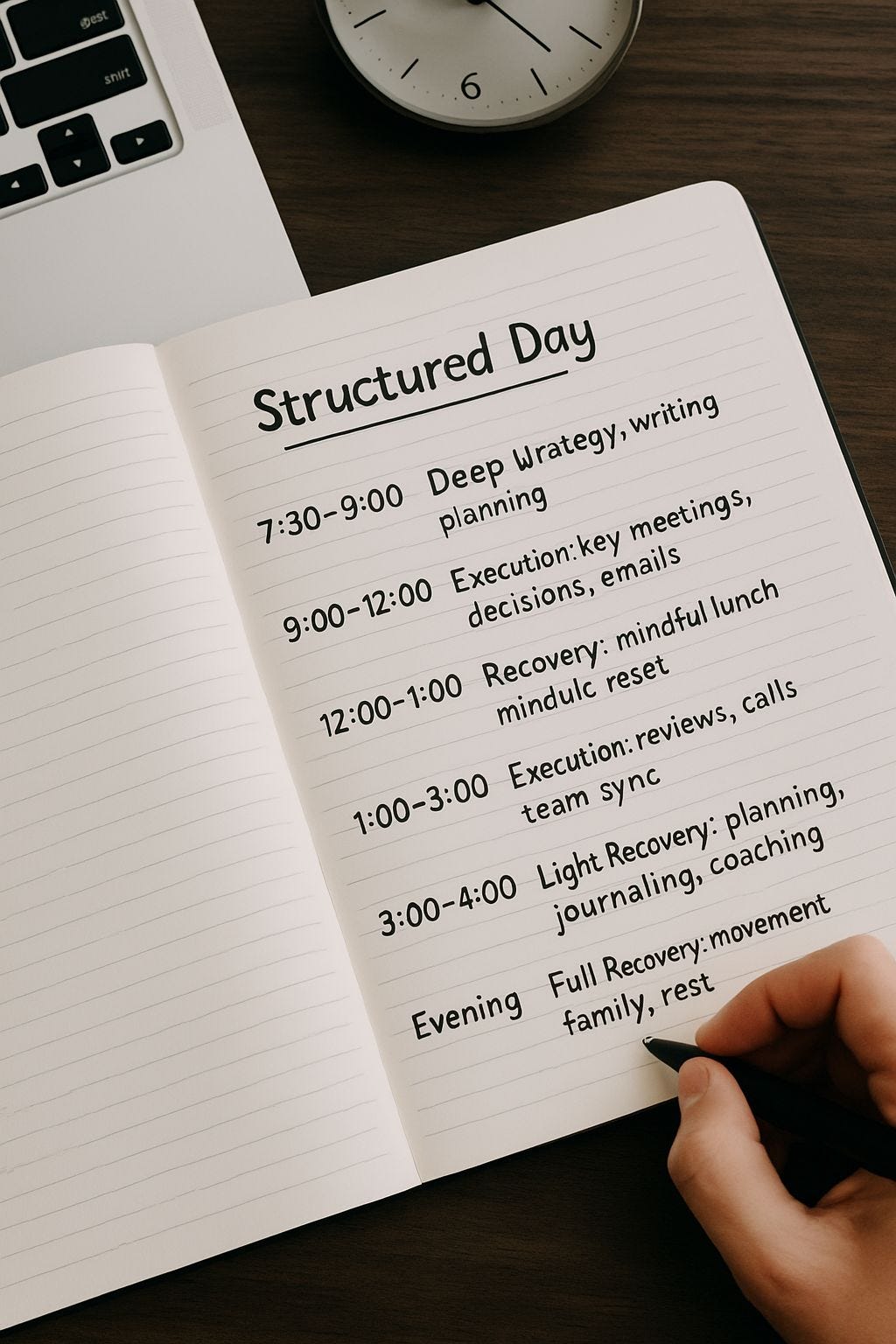The Power of a Structured Day:
How Great Leaders Protect Their Energy
Most people think productivity is about cramming more into a day.
More meetings. More emails. More hustle.
But senior leaders—those who last and lead well—know better.
They don’t just manage time.
They manage energy.
Because leadership isn’t a sprint. It’s a marathon with high-stakes turns.
Why Structure Wins Over Hustle
The most successful leaders I’ve observed don’t just “wing it.”
Their days are designed.
Their calendars reflect their values.
Their routines protect what matters most: decision clarity, strategic thinking, and personal recovery.
They don’t fill their day.
They frame it.
A Day That Protects Your Mind
Here’s what a structured, high-performance day often looks like:
7:30–9:00 AM – Deep Work
Start with thinking, not reacting.
This is when your brain is sharp. Use it for strategy, writing, planning—the work that actually moves things forward.
9:00–12:00 PM – Execution
Now is the time for meetings, decisions, and emails.
You’ve set your priorities—now go clear roadblocks and guide your team.
12:00–1:00 PM – Recovery
A real break. Step away. Go for a walk. Eat without screens. Let your mind breathe.
1:00–3:00 PM – Admin and Follow-through
Handle reviews, check-ins, and all the small things that keep the engine running.
3:00–4:00 PM – Light Recovery
Wrap up with reflection, light planning, or mentoring.
Ease into the close of the day with intention, not burnout.
Evening – Full Recovery
No guilt. You’ve earned rest. Move your body. Be present with your people. Sleep early.
What This Structure Really Gives You
You might look at this and think it’s too rigid.
But in reality, structure creates freedom.
It helps you focus on what matters, without feeling overwhelmed.
It prevents burnout by building in recovery.
And most importantly, it makes sure your most important work gets done—before the noise of the day takes over.
You Don’t Need to Do More. You Need to Do Less—Better.
We live in a world that rewards busy.
But the best leaders don’t chase busy. They chase clarity.
They ask:
• What’s the one decision today that will move things forward?
• When am I at my best mentally—and am I protecting that time?
• Am I recovering enough to lead again tomorrow?
Because at the highest level, your job is not just to work harder.
It’s to think better, lead better, and last longer.
And that starts with how you structure your day.
Structure doesn’t restrict you. It protects your focus from everything that doesn’t matter.






Work smarter, not harder, as they say
You Don’t Need to Do More. You Need to Do Less—Better.
👆🏽👆🏽👆🏽😃😃💯👌🏼